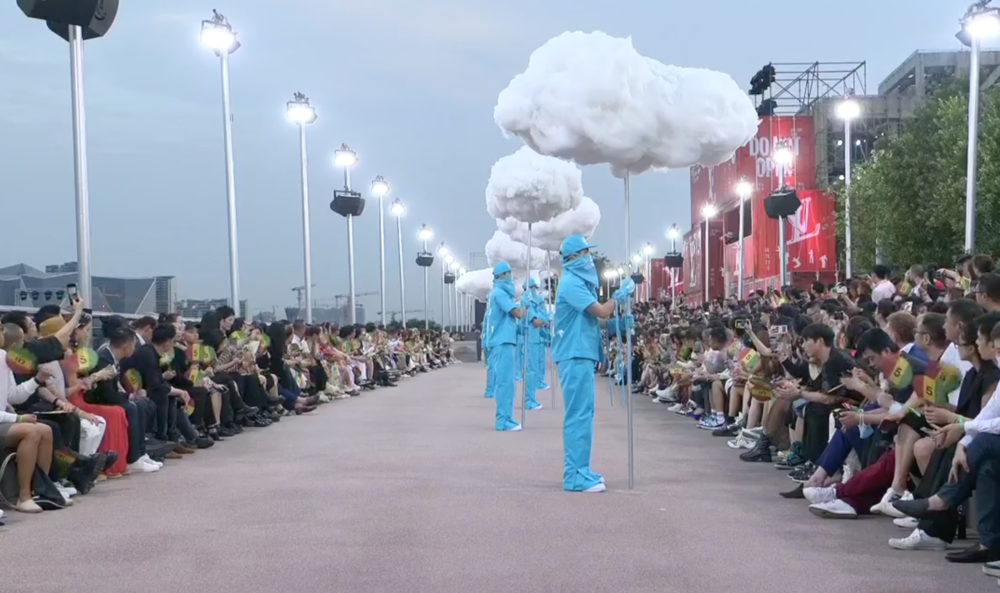In every imaginable way, 2020 has been an unusual year for the global luxury industry. With stores shuttered for months and an economic recovery crimped in a hard-hit United States and a virtually tourist-free Europe, retail strategies and expectations have been upended by the ongoing Covid-19 pandemic. But perhaps the most important luxury market shift of 2020 has been that Chinese shoppers are spending far more domestically than in years past, when they made the majority of luxury purchases abroad.
With revenues from China offsetting lackluster sales figures elsewhere, many luxury brands welcomed this surge in domestic shopping. Prada said its monthly group-wide China sales rose 60% in June and 66% in July, while luxury giant LVMH saw revenue from China in its fashion and leather goods division jump by more than 65% in the second quarter of the year.
With Chinese consumers spending more time in boutiques closer to home or even staying in to shop online via Tmall’s Luxury Pavilion or through a wealth of e-commerce livestreams on various platforms, luxury brands have had to move quickly and adjust to a new shopping reality.
Whereas previous years saw brands marketing heavily to China with the understanding that most big-ticket purchases would actually be made at boutiques in Tokyo, Paris, or New York, now content strategies must confront the new normal. Chinese shoppers are more willing and able to make purchases more quickly and with less shopping around than in the past, when many would compare prices at shops around the world and ultimately make the purchase via daigou agents or traveling friends or family.
Meanwhile, brands have had to contend with the very different landscape of 2020, shaped as it is by the Covid-19 pandemic. With runway shows and extravagant, celebrity-packed parties largely off-limits outside of China, we have seen brands go all-in on livestreaming, mix online and offline efforts in interesting ways, or focus on allocating their marketing budgets more toward digital.
Strategy 1: Louis Vuitton — Mostly Offline, With Online Elements#
While the global spread of Covid-19 saw most luxury brands cancel their runway shows and take most of their efforts online, in August Louis Vuitton showed off its new Spring/Summer 2021 menswear collection with a fashion show in Shanghai that was livestreamed globally — the first stop in a touring series of runways presentations.

Adopting the “cloud living” trend that has swept through fashion in this coronavirus-hit year, the show — despite its obvious offline aspect, featuring celebrities and guests seated along the catwalk — promoted its online side via a heavily publicized livestream and full-court social media press. Held outdoors, with only attendants and a handful of attendees wearing face masks, the show gave virtually no indication of the global pandemic that has decimated the luxury market in 2020. As such, it can be said that Louis Vuitton’s content strategy in China for 2020 was one of trying to move beyond the pandemic and get consumers interested in the new collections via relatively traditional methods, i.e., star-studded offline events.
Strategy 2: Prada — Artsy and Semi-Private#
Last month,
Prada#
took a more subdued page out of the offline event handbook with an exclusive site-specific event at its Prada Rong Zhai space in Shanghai, the latest iteration of its Prada Mode private club pop-up, this time in collaboration with filmmaker Jia Zhangke. Around 2,000 VIPs passed through the halls of the venue over the course of two days of exhibitions, talks, and parties, allowing Prada to revive the semi-anachronism that is an offline luxury event. However, the brand did show an awareness of where things are headed in the luxury business by letting audiences tune in to a livestream of the event via a dedicated Prada WeChat mini-program that drew an estimated 200,000 views.
While the event wasn’t as splashy as Louis Vuitton’s, giving audiences the ability to experience it through livestreaming helped pique interest, and Prada’s relatively belated move into Chinese e-commerce (launching flagships on Secoo and JD.com last year, and on Tmall this year) has put the brand in a better position to capitalize on event buzz via more online sales.
Strategy 3: Loewe — Low-key and Selective#
The LVMH-owned Spanish brand
Loewe#
has excelled at gaining new ground in the China market this year without the exorbitant cost of a traditional luxury event like a runway show or Forbidden City takeover, through more subdued efforts aimed at specific (and high-potential) audiences. The brand has achieved this through a unique blend of the most effective elements of content-commerce in 2020, ranging from ultra-niche brand collaborations (with the likes of The Beast) to the “cloud living” trend (livestreaming a Paula’s Ibiza event featuring performances by “Rap of China” alumni) and e-commerce on the brand’s own terms.
Most recently, Loewe creative director Jonathan Anderson chose to forgo a big-budget runway show and tap the homebound state of the world to debut the brand’s Spring-Summer 2021 line through an innovative “Show on the Wall” box.
Packed with a limited-edition wallpaper, life-size prints of models wearing the collection, a pair of scissors, Loewe-branded paintbrush, and wallpaper glue, the box included everything needed for the recipient to experience the collection and stage a personal Loewe “show” in the privacy and safety of his or her own home. Lucky recipients of the box included editors, fashion writers, and — in China — influencers like Homeism founder Licheng Ling. With its “Show on the Wall,” Loewe managed to create something covetable, Covid-relevant, and worthy of online buzz whether it be on Instagram, TikTok, or WeChat.

